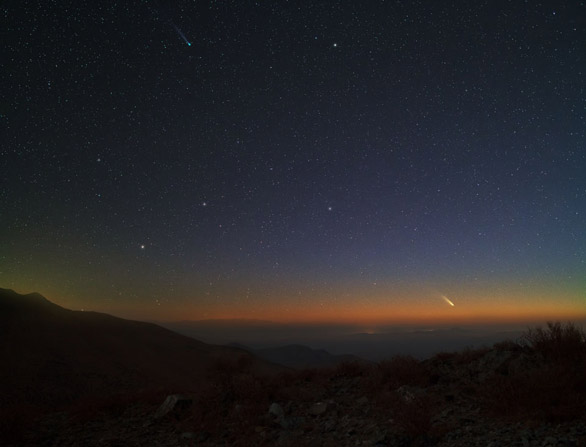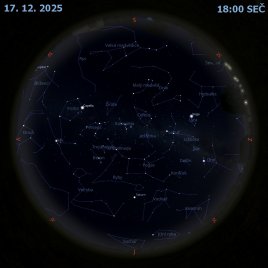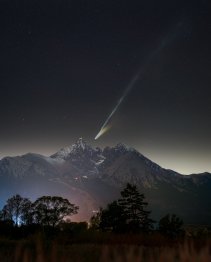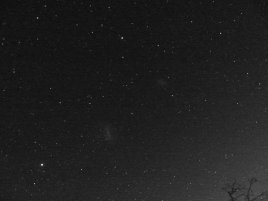Komety Lemmon a PanSTARRS vrcholí

Uznání a copyright: Yuri Beletsky (ESO)
V příštích dvou týdnech dosáhnou vrcholu svojí jasnosti dvě impozantní komety. Tento snímek z minulého týdne využil tak vzácné příležitosti a obě komety zachytil z pouště Atacama v Jižní Americe. Na snímku nahoře je vlevo nahoře vidět kometa C/2012 F6 (Lemmon), která ukazuje dlouhý ohon, kterému dominují zeleně zářící ionty. U obzoru vpravo dole je vidět kometa C/2011 L4 (PanSTARRS), která předvádí jasný ohon, kterému dominuje prach odrážející sluneční světlo. Ohony obou komet míří směrem k nedávno zapadlému Slunci. Kometa Lemmon bude na jižní obloze příští týden před západem sotva viditelná pouhým okem a potom, jak bude slábnout a pohybovat se pomalu na sever, tak bude nejlépe vidět triedrem. Kometa PanSTARRS ovšem zůstane viditelná na jižní obloze pouze několik málo dní a poté zůstane dosti jasná na to, aby se dala najít při pohybu na severní obloze i pouhým okem. Pokud budou pozorovatelé oblohy chtít na obloze najít obří tající sněhovou kouli jménem PanSTARRS, tak by se hned po západu měli dívat k západnímu obzoru. Pozorovatelé vzdálenějšího vesmíru také monitorují zjasňování komety C/2012 S1 (ISON), která by se koncem roku 2013 měla stát jedním z nejjasnějších objektů na celé noční obloze.
NASA Official: Phillip Newman Specific rights apply. NASA Web Privacy Policy and Important Notices
A service of: ASD at NASA / GSFC & Michigan Tech. U.
Odkaz na originální APOD


